Condensation Control to Cope with Occupancy Activity and Effectively Mitigate Condensation in Unheated Spaces by Real-Time Sensor Control Strategy
Abstract
1. Introduction
2. Methodology
2.1. Field Measurement Setup for On-Site Diagnosis
2.2. Simulation Model Setup for Parameter Analysis
2.3. Site Experiment Setup for Parameter Analysis
3. Diagnosis of Unheated Spaces to Determine Control Parameters
- (1)
- Keeping the door closed while the neighboring space is being used to generate moisture: A moisture transfer diagnosis experiment was conducted in the balcony space by opening the balcony door at different times while imitating the generation of moisture in the kitchen: the door was closed while the water boiled; the door was opened immediately after the water boiled; the door was opened in the middle of the boiling process; and the door was opened immediately after the heat source for the boiling water was turned off. As shown in Figure 9, condensation was reported whenever the balcony door opened. Condensation was successfully prevented when the door was kept closed while the neighboring space was in use for the generation of moisture.
- (2)
- Applying an insulation panel on the wall adjacent to the outside: Although the balcony air temperature was also influenced by the kitchen temperature when the door was open, an increase in temperature was not sufficient to prevent condensation on the wall surfaces. The temperature of the balcony space was influenced largely by the thermal capacity of the concrete wall; consequently, the temperature quickly returned to the temperature of the space prior to opening the door, as shown in Figure 9a.
- (3)
- Providing ventilation to the balcony space: When the balcony door was open, the RH (relative humidity) immediately increased within three minutes and thereafter dispersed, as shown in Figure 9b. However, the moisture content in the balcony space increased after several instances of opening the door, as shown in Figure 9c; the balcony is an airtight space, and thus, air does not remove the moisture transferred from the kitchen. As shown in Figure 10, when the window was closed, the generation of moisture in the balcony space increased the RH over 90%. Even when moisture was produced, adequate ventilation, such as opening the window, reduced the condensation risk, as is shown in the case with an open window in Figure 10.
4. Condensation Control Solution for Unheated Spaces
4.1. Fixed Parameter Control by the Existing Strategy
4.2. Occupancy Parameter Control by the IoT Strategy
4.2.1. Establishing the on-Site Experiment for the Occupancy Parameter
4.2.2. Results of the Occupancy Parameter Analysis
5. Conclusions
Author Contributions
Funding
Conflicts of Interest
References
- Viitanen, H.; Vinha, J.; Salminen, K.; Ojanen, T.; Peuhkuri, R.; Paajanen, L.; Lähdesmäki, K. Moisture and bio-deterioration risk of building materials and structures. J. Build. Phys. 2010, 33, 201–224. [Google Scholar] [CrossRef]
- Hens, H. Fungal defacement in buildings: A performance related approach. HvacR Res. 1999, 5, 265–280. [Google Scholar] [CrossRef]
- Garrett, M.H.; Rayment, P.R.; Hooper, M.A.; Abramson, M.J.; Hooper, B.M. Indoor airborne fungal spores, house dampness and associations with environmental factors and respiratory health in children. Clin. Exp. Allergy 1998, 28, 459–467. [Google Scholar] [CrossRef] [PubMed]
- Bush, R.K.; Portnoy, J.M.; Saxon, A.; Terr, A.I.; Wood, R.A. The medical effects of mold exposure. J. Allergy Clin. Immunol. 2006, 117, 326–333. [Google Scholar] [CrossRef]
- Fisk, W.J.; Lei-Gomez, Q.; Mendell, M.J. Meta-analyses of the associations of respiratory health effects with dampness and mold in homes. Indoor Air 2007, 17, 284–296. [Google Scholar] [CrossRef]
- Jaakkola, M.; Haverinen-Shaugnessy, U.; Doewes, J.; Nevalainen, A. Indoor dampness and mold problems in homes and asthma onset in children. In Environmental Burden of Disease Associated with Inadequate Housing—A Method Guide to the Quantification of Health Effects of Selected Housing Risks in the WHO European Region; World Health Organization: Geneva, Switzerland, 2011. [Google Scholar]
- Lin, Z.; Zhao, Z.; Xu, H.; Zhang, X.; Wang, T.; Kan, H.; Norback, D. Home Dampness Signs in Association with Asthma and Allergic Diseases in 4618 Preschool Children in Urumqi, China-The Influence of Ventilation/Cleaning Habits. PLoS ONE 2015, 10, e0134359. [Google Scholar] [CrossRef]
- Becker, R. Effects of heating patterns on internal surface temperatures and risk of condensation. Build. Environ. 1993, 28, 333–345. [Google Scholar] [CrossRef]
- Hamdan, M.A. Layered wall design to prevent moisture condensation on its inside surface. Energy Convers. Manag. 2002, 43, 1821–1828. [Google Scholar] [CrossRef]
- Liu, J.; Aizawa, H.; Yoshino, H. CFD prediction of surface condensation on walls and its experimental validation. Build. Environ. 2004, 39, 905–911. [Google Scholar] [CrossRef]
- Su, B. Prevention of Winter Mould Growth in Housing. Archit. Sci. Rev. 2006, 49, 385–390. [Google Scholar] [CrossRef]
- Aelenei, D.; Henriques, F.M. Analysis of the condensation risk on exterior surface of building envelopes. Energy Build. 2008, 40, 1866–1871. [Google Scholar] [CrossRef]
- Sato, N.M.N.; Shirakawa, M.A.; Loh, K.; John, V.M. Influence of thermal properties of materials in condensation and microorganism growth on building façades. In Proceedings of the 11 DBMC International Conference on Durability of Building Materials and Components, Istanbul, Turkey, 11–14 May 2008; pp. 11–14. [Google Scholar]
- Cho, W.; Iwamoto, S.; Kato, S. Condensation risk due to variations in airtightness and thermal insulation of an office building in warm and wet climate. Energies 2016, 9, 875. [Google Scholar] [CrossRef]
- Oh, S.M.; Park, S.H.; Joung, K.S. Study on the Improvement Plans of Condensation Defect Examples in Apartment Building. Korean J. Air Cond. Refrig. Eng. 2017, 29, 82–88. [Google Scholar]
- Moon, H.J.; Kim, H.-Y. The relationships between the extent of mould problems and physical building characteristics in high-rise apartment buildings. In Proceedings of the Clima 2007 WellBeing Indoors, Helsinki, Finland, 10–14 June 2007; Volume 5. [Google Scholar]
- Dictionary, M.-W. Merriam-Webster. 2002. Available online: https://www.merriam-webster.com/dictionary/balcony (accessed on 8 August 2019).
- Park, C. Emerging from Customary Design for Balcony Space in Apartment. J. Arch. Inst. Korea Plan 2004, 20, 67–76. [Google Scholar]
- Kim, S.-Y.; Oh, C.-O. A Study of Current Status and Residents’ Needs of Balcony Extension in Korean Apartment Housing. Korean Inst. Inter. Des. J. 2012, 21, 152–162. [Google Scholar]
- Enforcement Decree of the Building Act Korea. Available online: http://www.law.go.kr/법령/건축법%20시행령/제119조 (accessed on 1 September 2019).
- Gutt, G. Condensation in attics: Are vapor barriers really the answer? Energy Build. 1979, 2, 251–258. [Google Scholar] [CrossRef]
- Janssens, A.; Hens, H. Interstitial condensation due to air leakage: A sensitivity analysis. J. Therm. Envel. Build. Sci. 2003, 27, 15–29. [Google Scholar] [CrossRef]
- Ali, M.; Oladokun, M.O.; Osman, S.B.; Samsuddin, N.; Hamzah, H.A. Moisture condensation on building envelopes in differential ventilated spaces in the tropics: Quantitative assessment of influencing factors. MATEC Web Conf. 2016, 66, 00089. [Google Scholar] [CrossRef]
- Moon, H.J.; Ryu, S.H.; Choi, M.S.; Kim, S.K.; Yang, S.H. Evaluation of mould growth risk in apartment houses using hygrothermal simulation. In Building Simulation; International Building Performance Simulation Association: Sydney, Australia, 2011. [Google Scholar]
- Standard, A. Standard 160-2009: Criteria for Moisture Control Design Analysis in Buildings; American Society of Heating, Refrigerating and Air-Conditioning Engineers: Atlanta, GA, USA, 2009. [Google Scholar]
- TenWolde, A.; Walker, I.S. Interior moisture design loads for residences. In Proceedings Thermal Performance of Exterior Envelopes of Buildings VIII; ASHRAE: Atlanta, GA, USA, 2001. [Google Scholar]
- Yik, F.; Sat, P.; Niu, J. Moisture generation through Chinese household activities. Indoor Built Environ. 2004, 13, 115–131. [Google Scholar] [CrossRef]
- Zemitis, J.; Borodinecs, A.; Frolova, M. Measurements of moisture production caused by various sources. Energy Build. 2016, 127, 884–891. [Google Scholar] [CrossRef]
- Gubbi, J.; Buyya, R.; Marusic, S.; Palaniswami, M. Internet of Things (IoT): A vision, architectural elements, and future directions. Future Gener. Comput. Syst. 2013, 29, 1645–1660. [Google Scholar] [CrossRef]
- Moreno, M.; Úbeda, B.; Skarmeta, A.; Zamora, M. How can we tackle energy efficiency in iot basedsmart buildings? Sensors 2014, 14, 9582–9614. [Google Scholar] [CrossRef] [PubMed]
- Bashir, M.R.; Gill, A.Q. Towards an IoT big data analytics framework: Smart buildings systems. In Proceedings of the 2016 IEEE 18th International Conference on High Performance Computing and Communications; IEEE 14th International Conference on Smart City; IEEE 2nd International Conference on Data Science and Systems (HPCC/SmartCity/DSS), Sydney, Australia, 12–14 December 2016; pp. 1325–1332. [Google Scholar]
- Pocero, L.; Amaxilatis, D.; Mylonas, G.; Chatzigiannakis, I. Open source IoT meter devices for smart and energy-efficient school buildings. HardwareX 2017, 1, 54–67. [Google Scholar] [CrossRef]
- Tang, S.; Kalavally, V.; Ng, K.Y.; Parkkinen, J. Development of a prototype smart home intelligent lighting control architecture using sensors onboard a mobile computing system. Energy Build. 2017, 138, 368–376. [Google Scholar] [CrossRef]
- Plus, E. Energy Plus Engineering Reference. In Building Technologies Program; US Department of Energy: Washington, DC, USA, 2013. [Google Scholar]
- Riffat, S. A study of heat and mass transfer through a doorway in a traditionally built house. Ashrae Trans 1989, 95, 584–589. [Google Scholar]
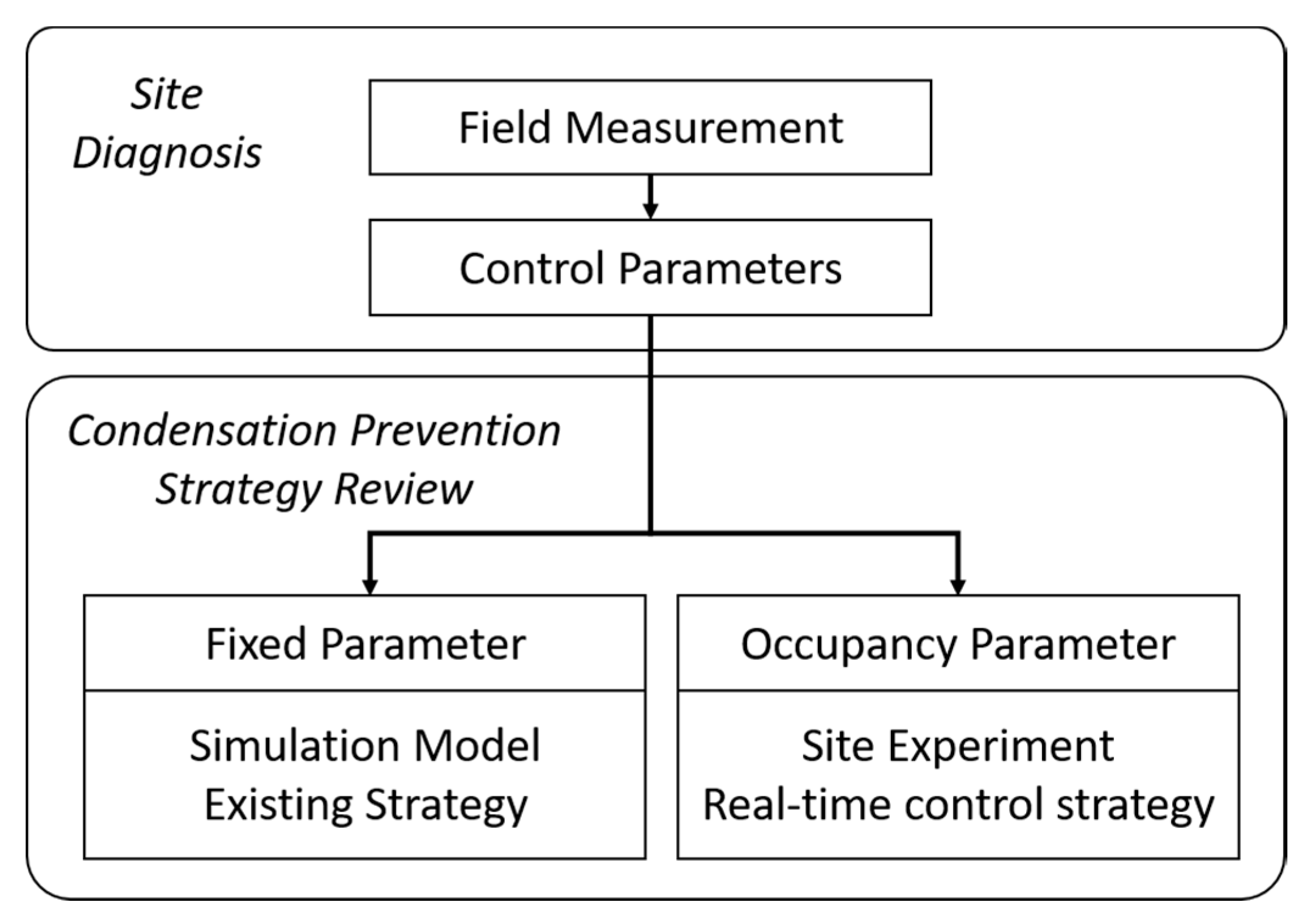
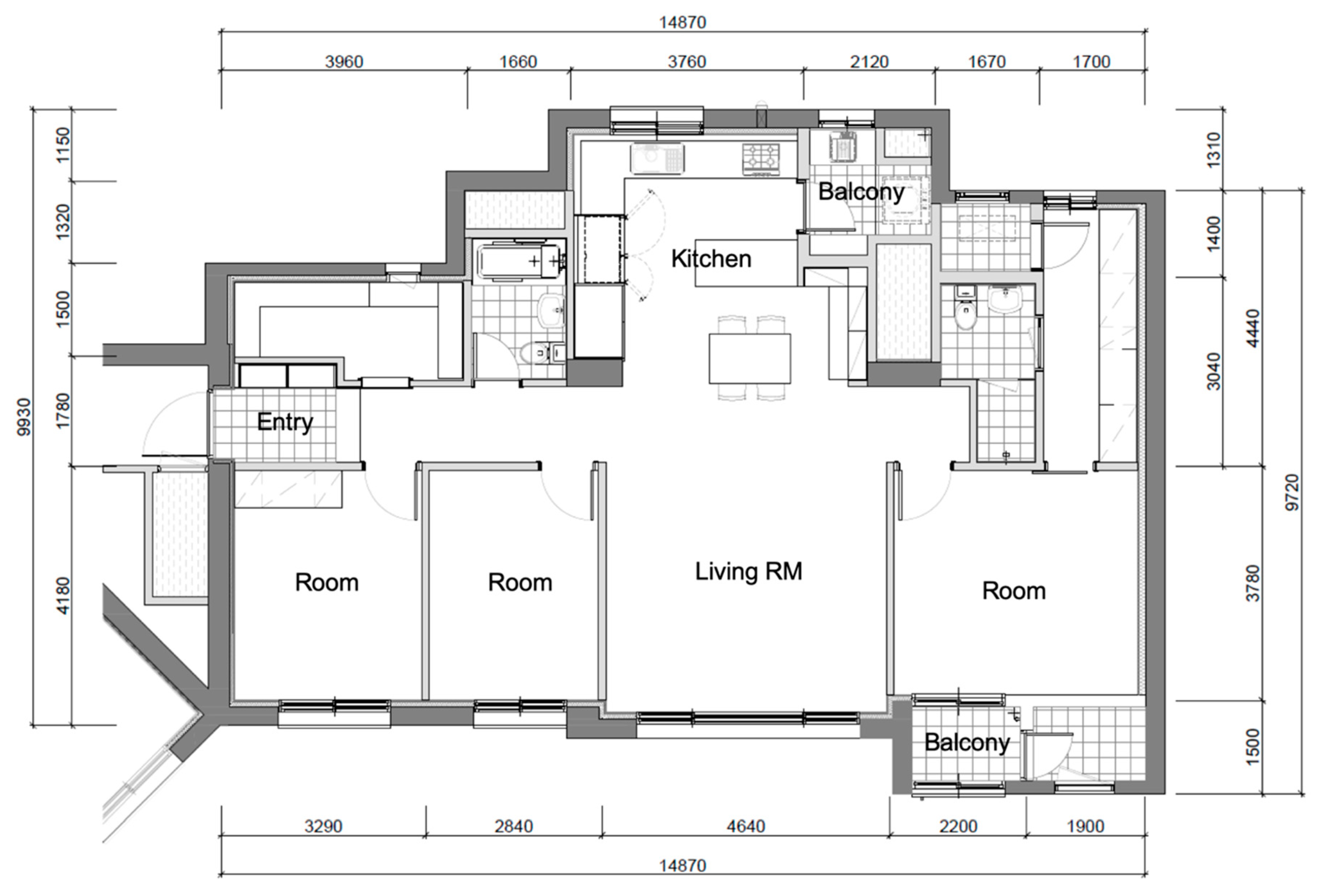
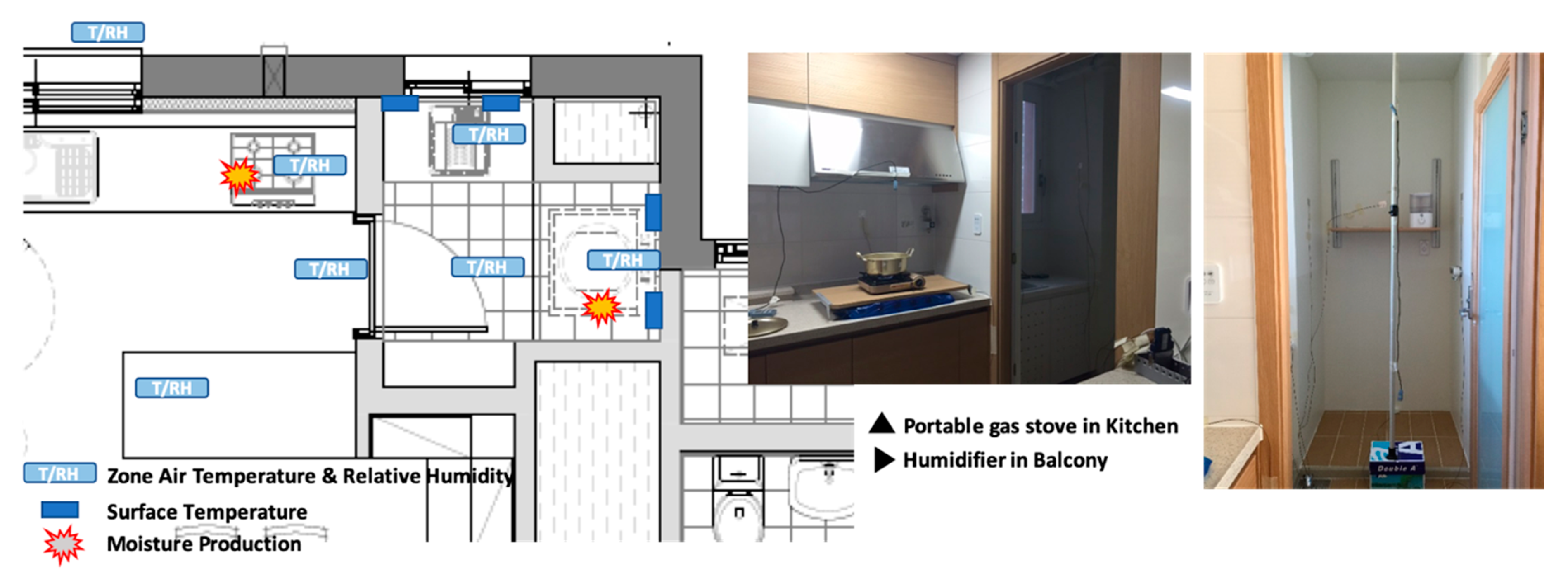

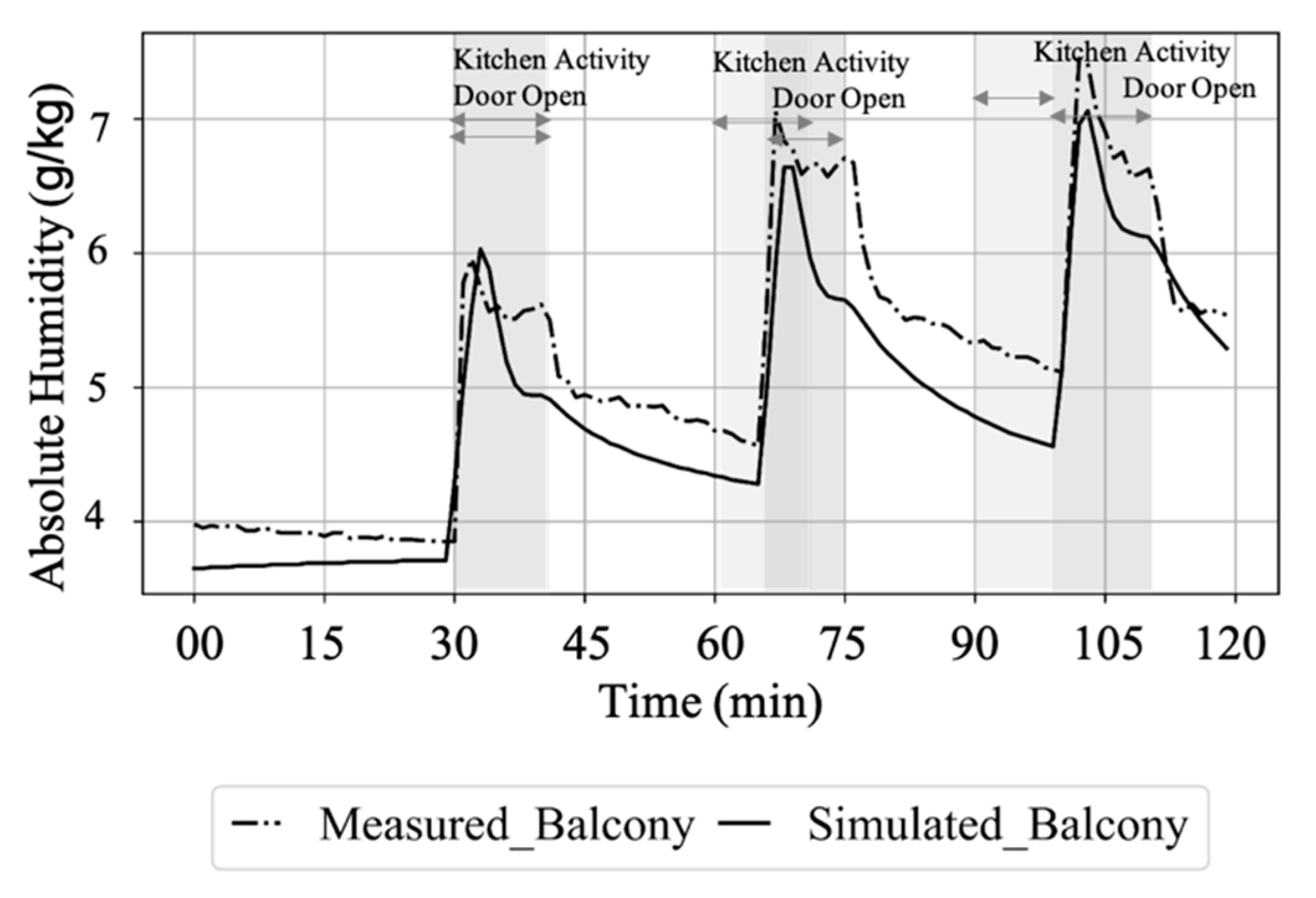

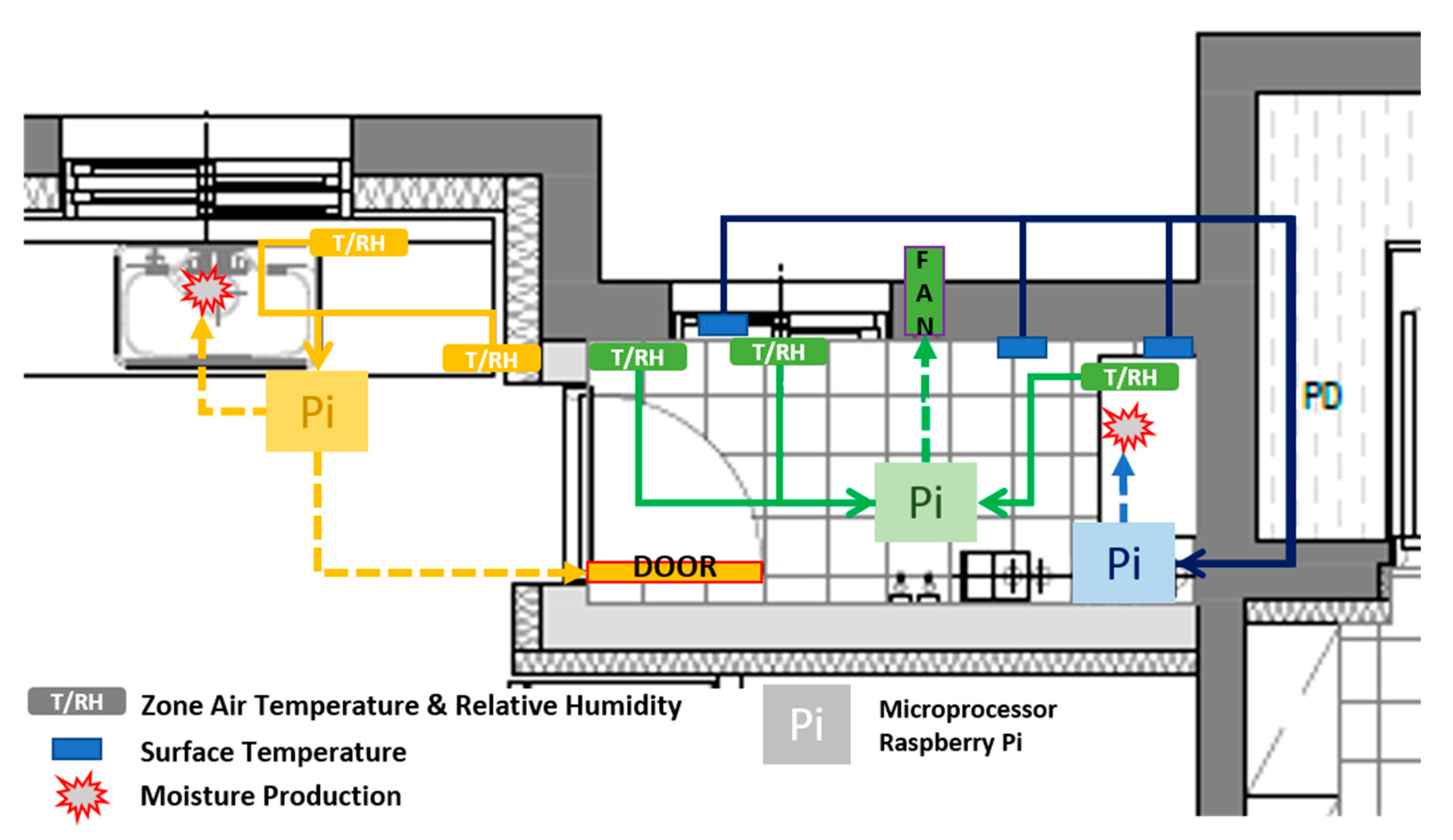
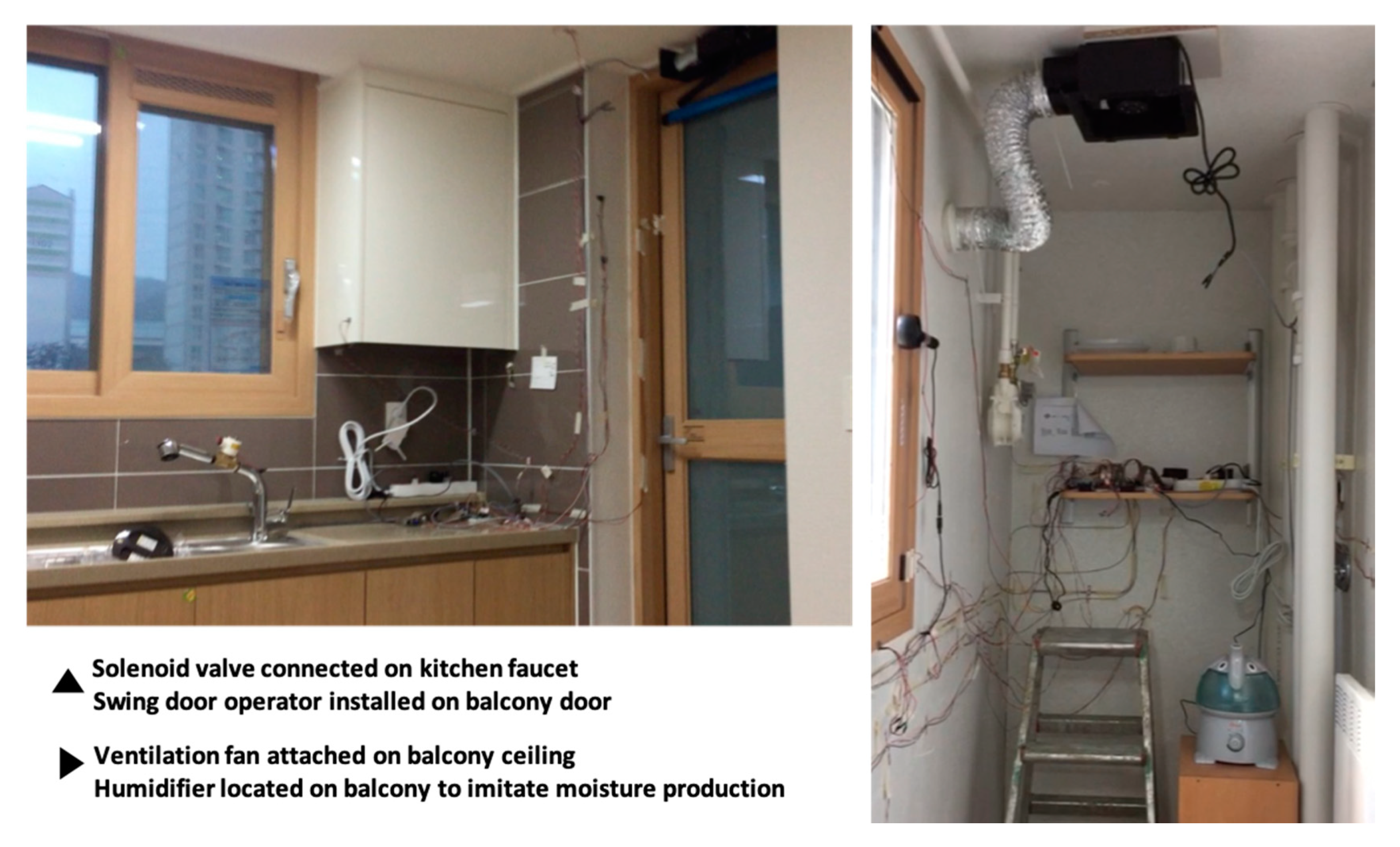
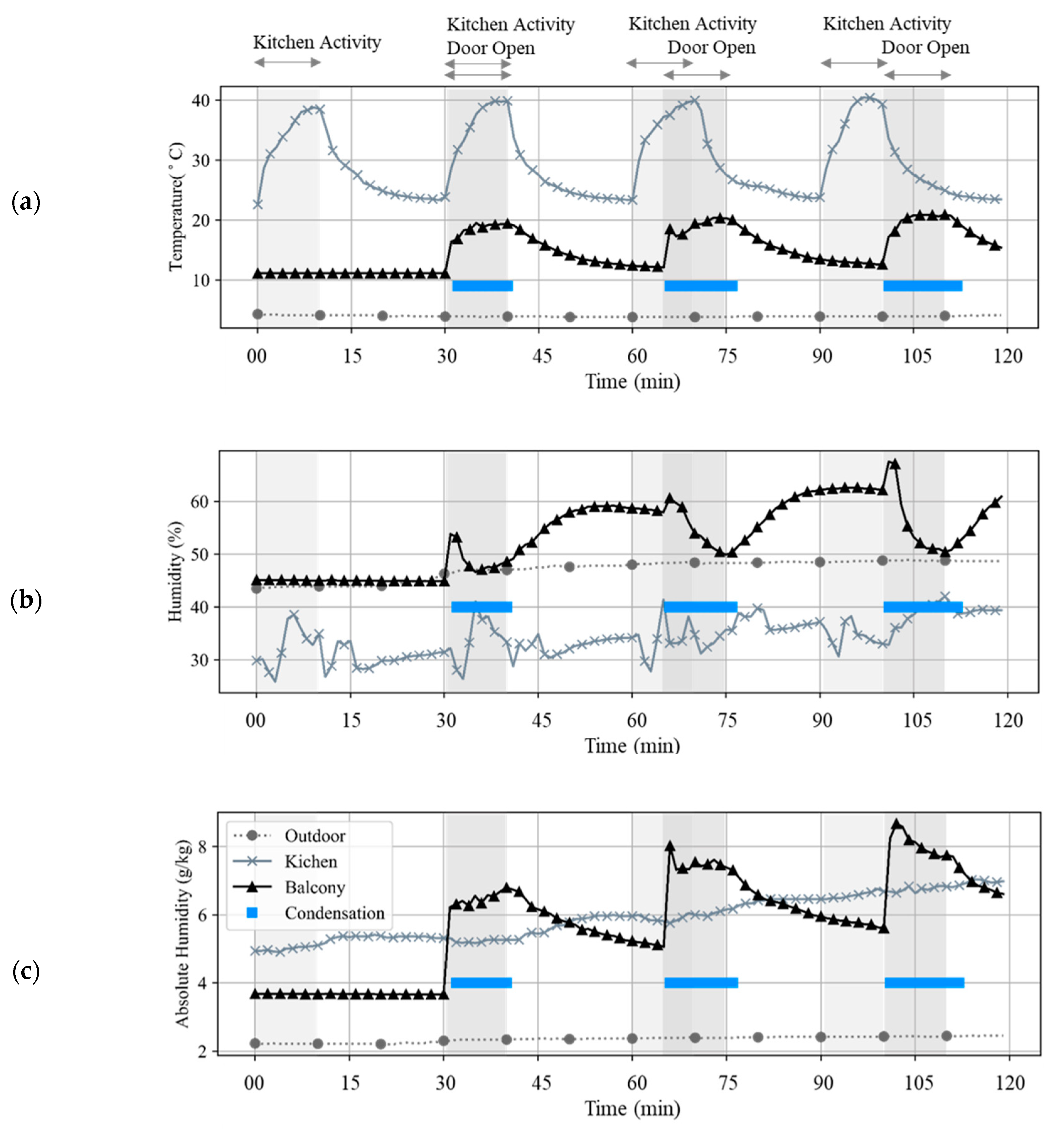
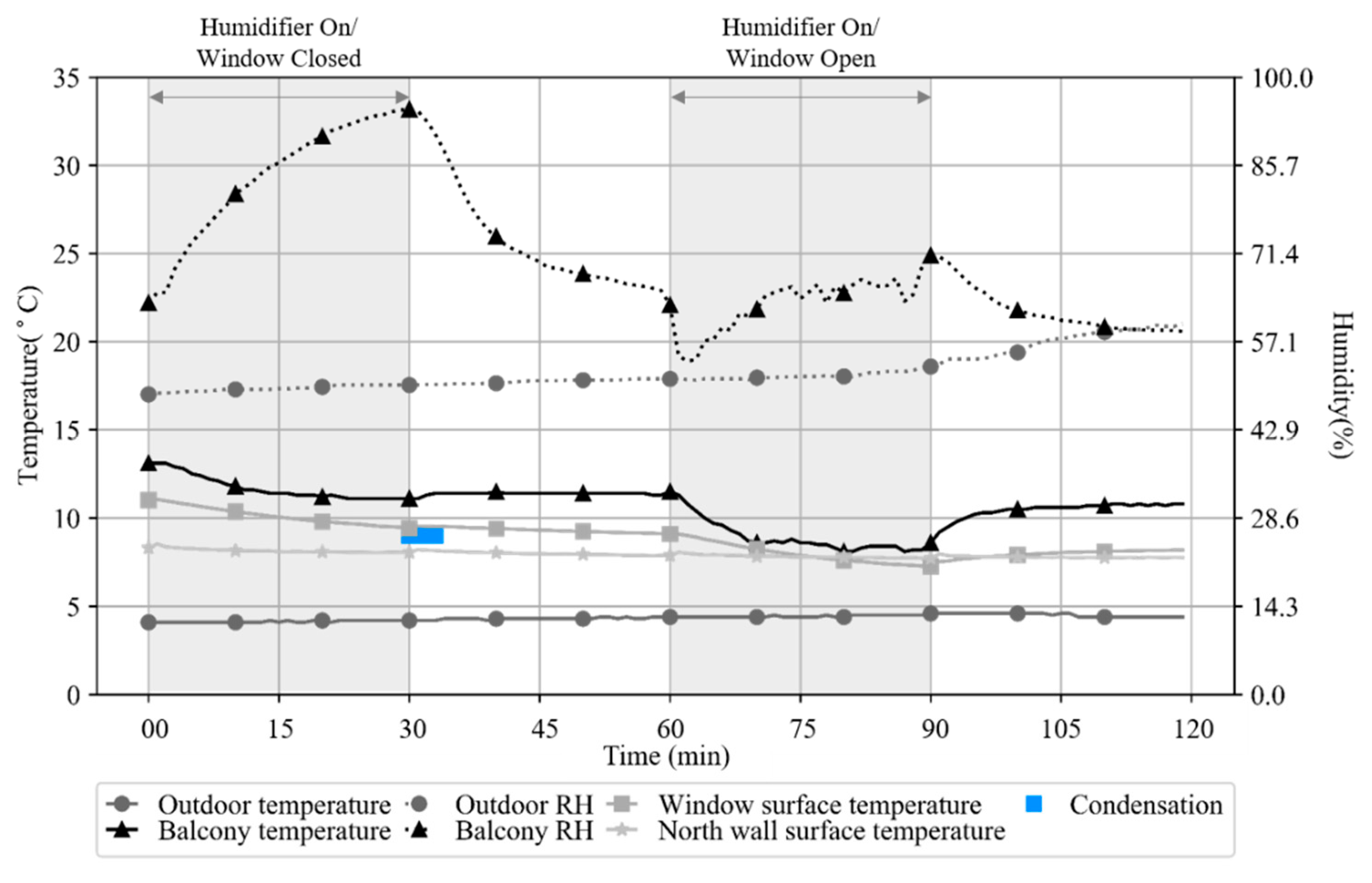
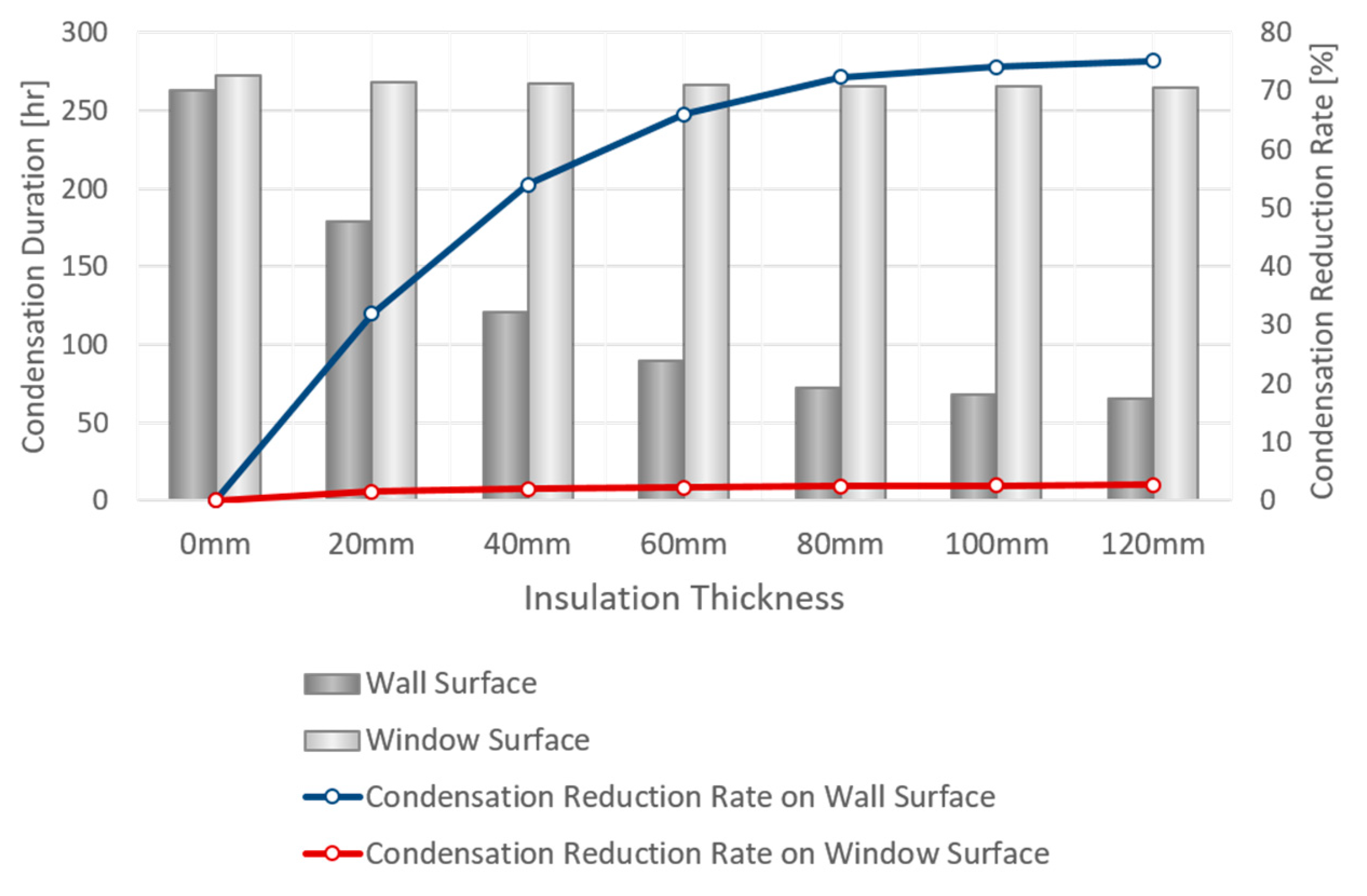
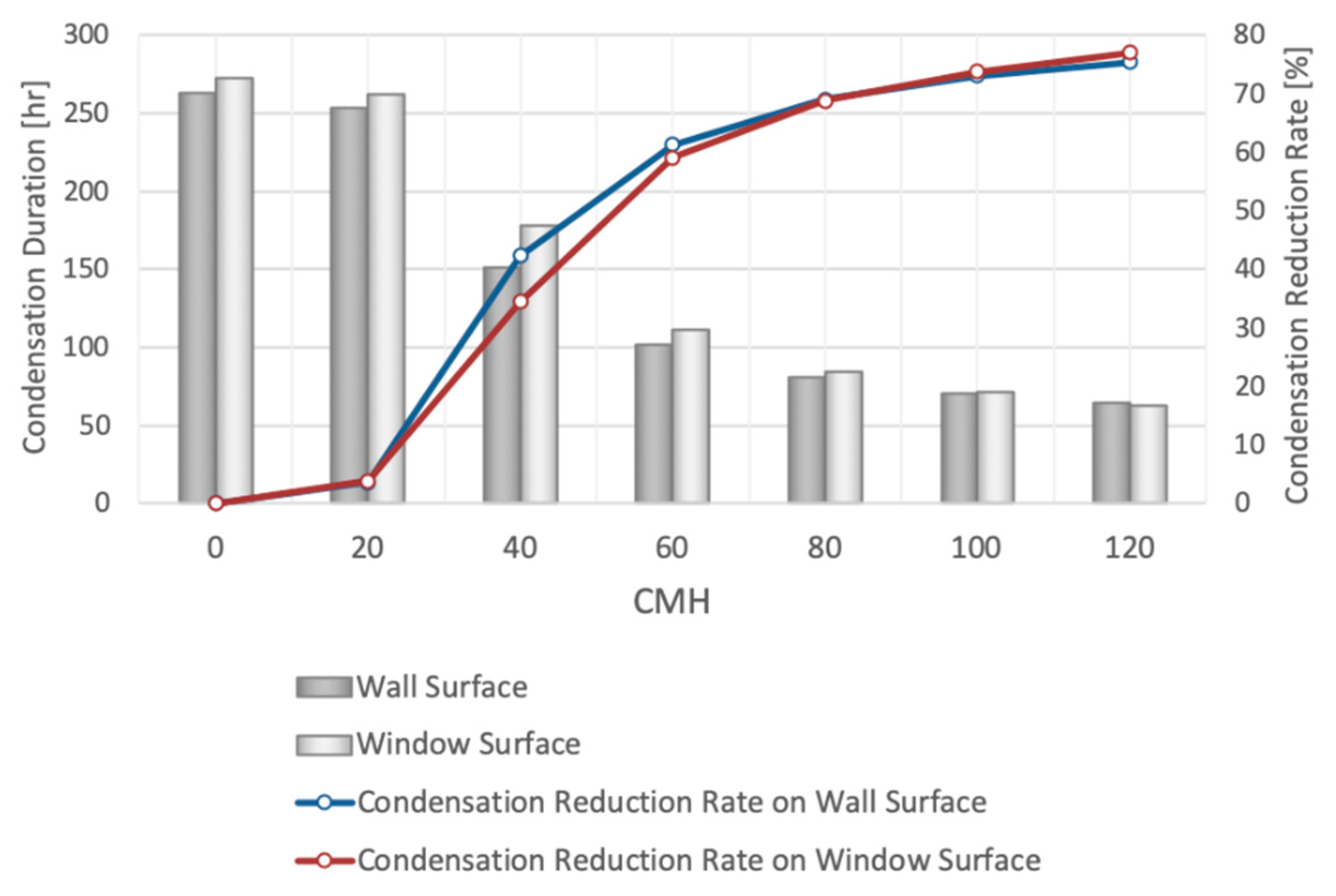
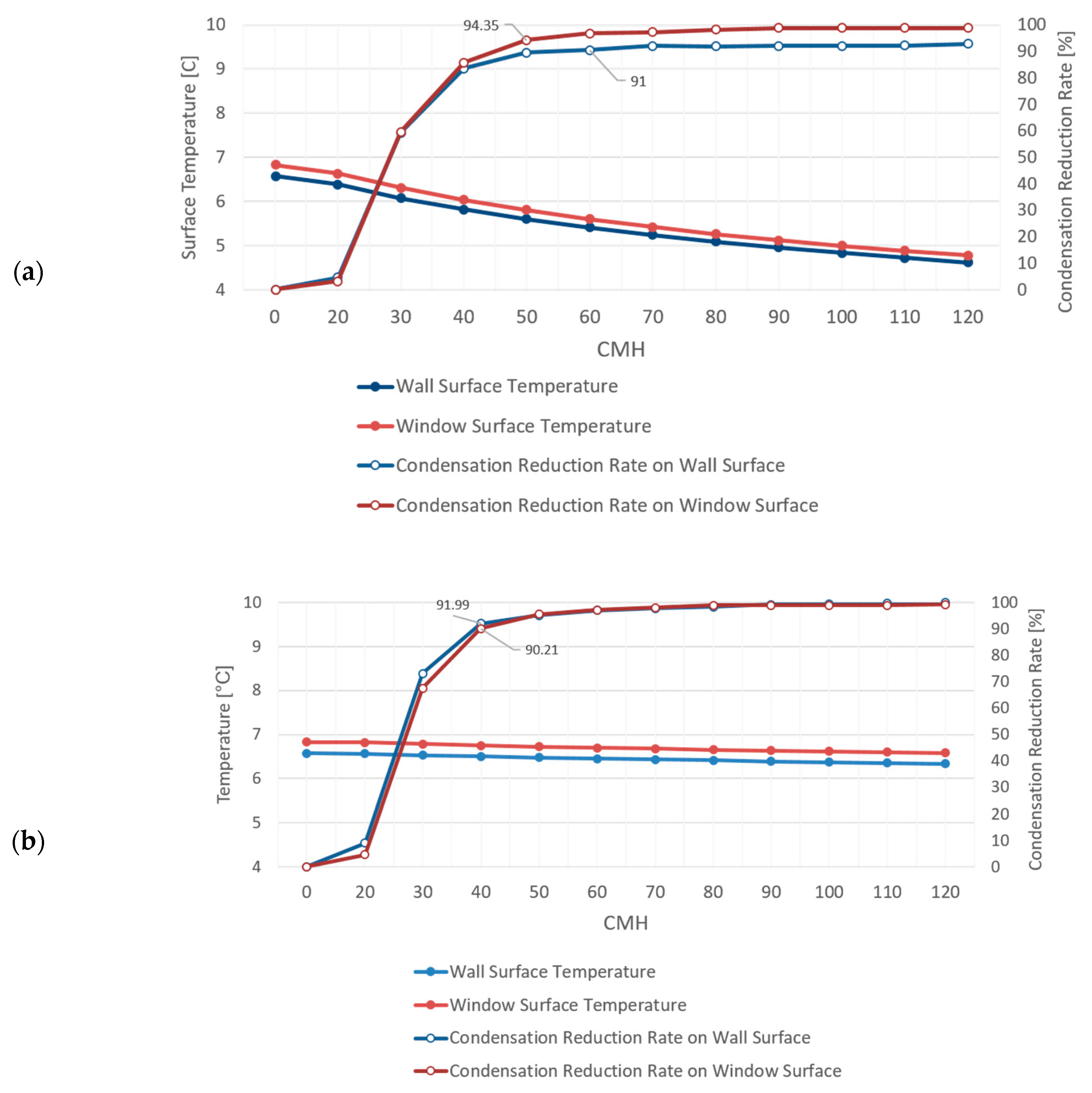
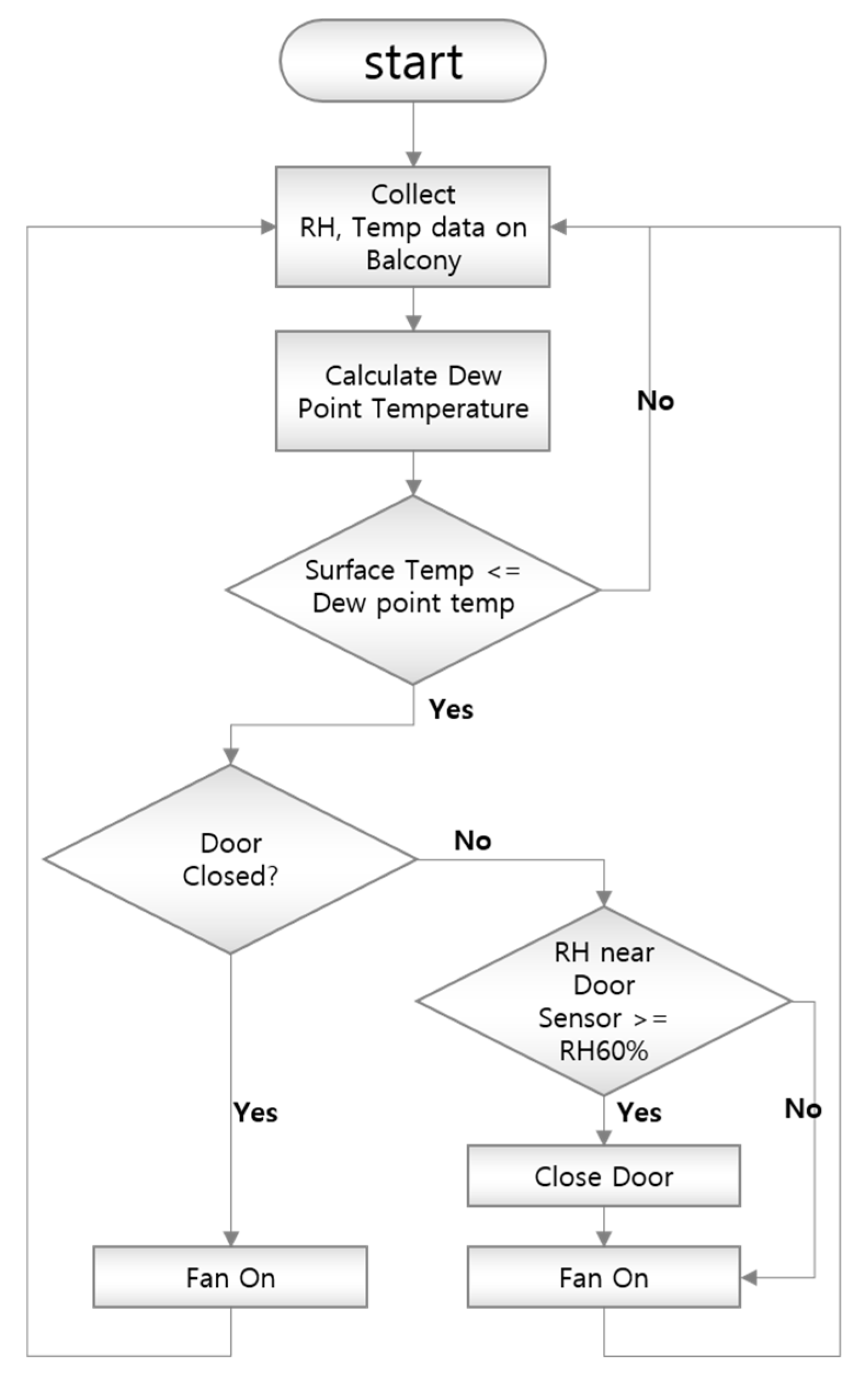

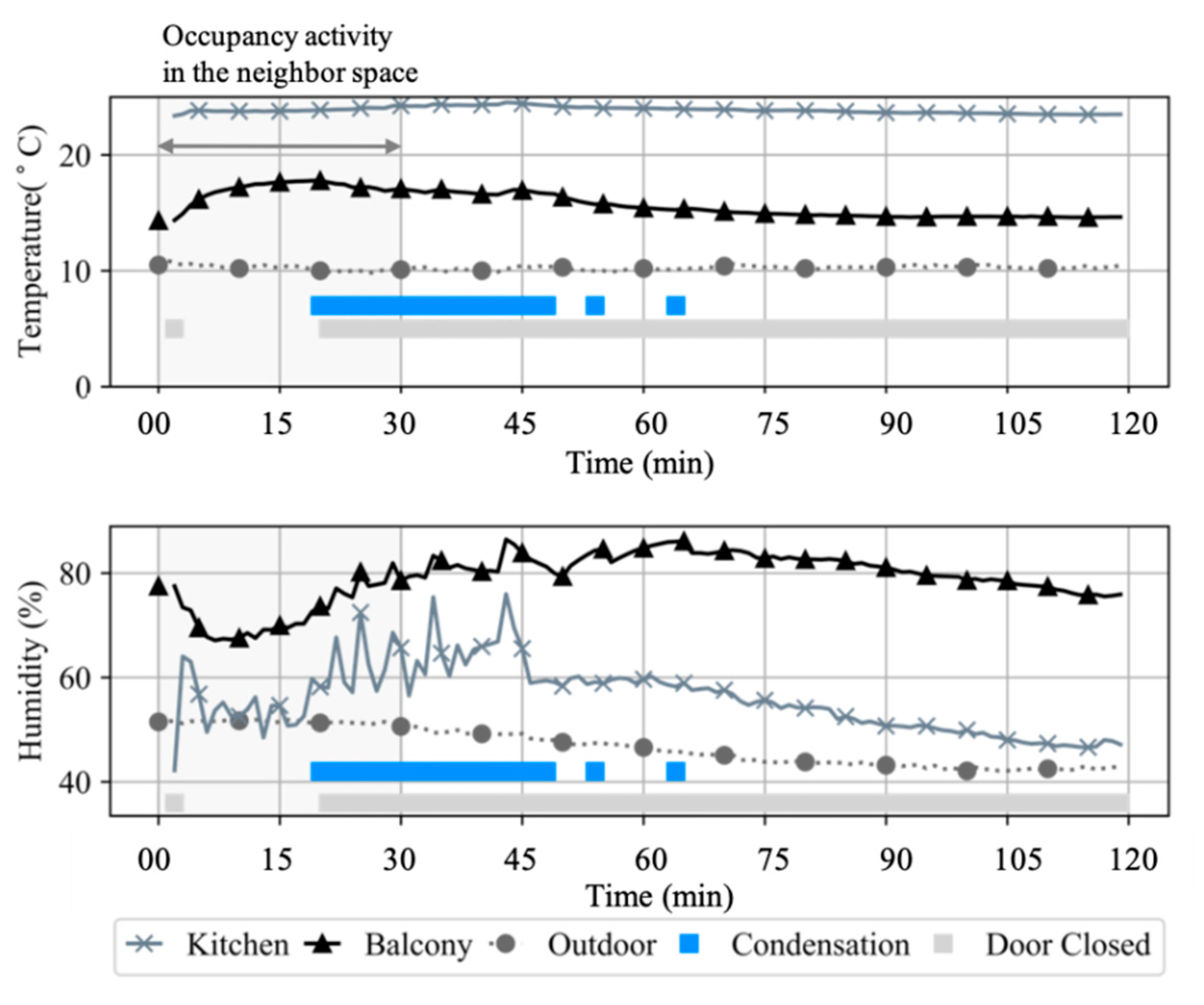
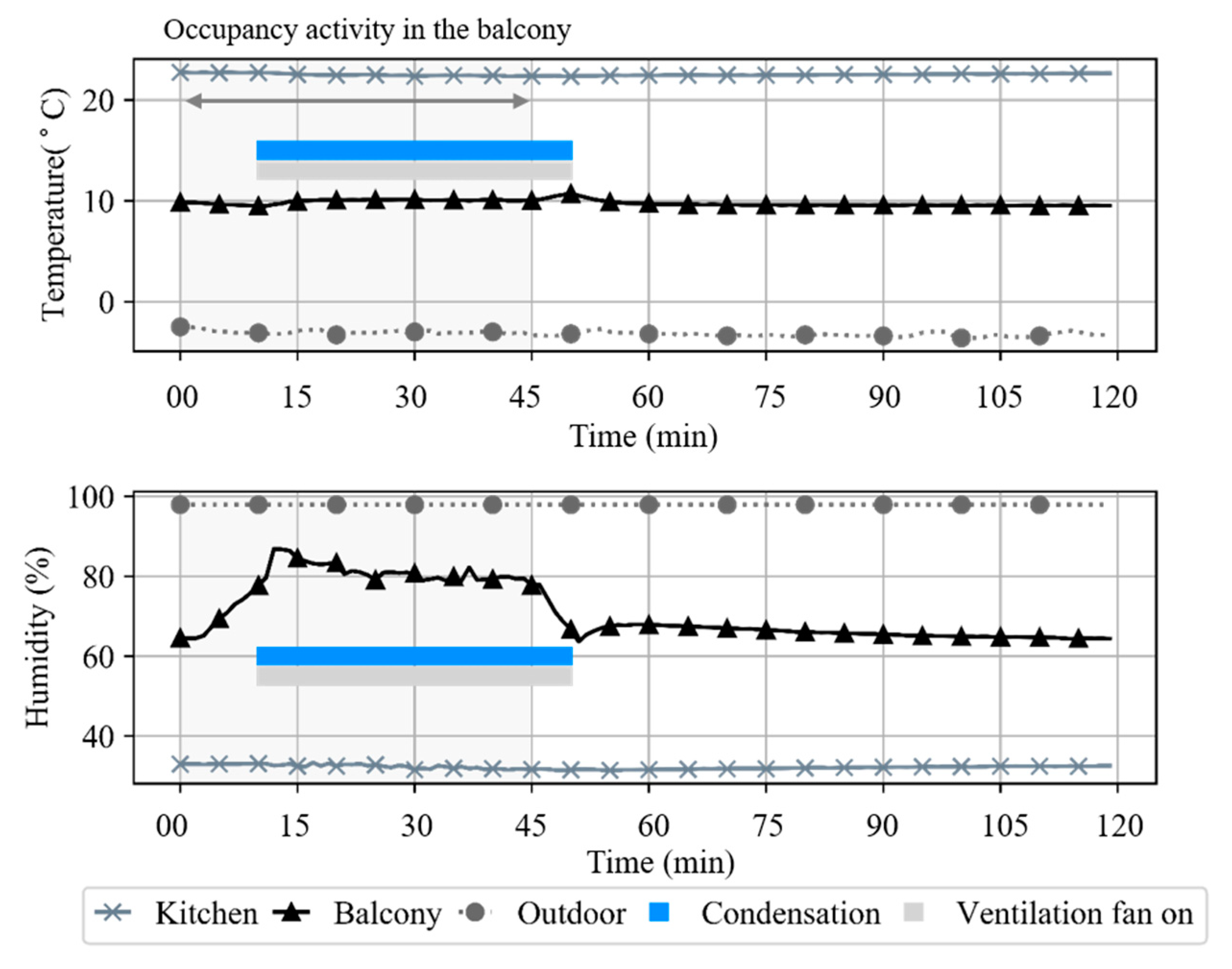

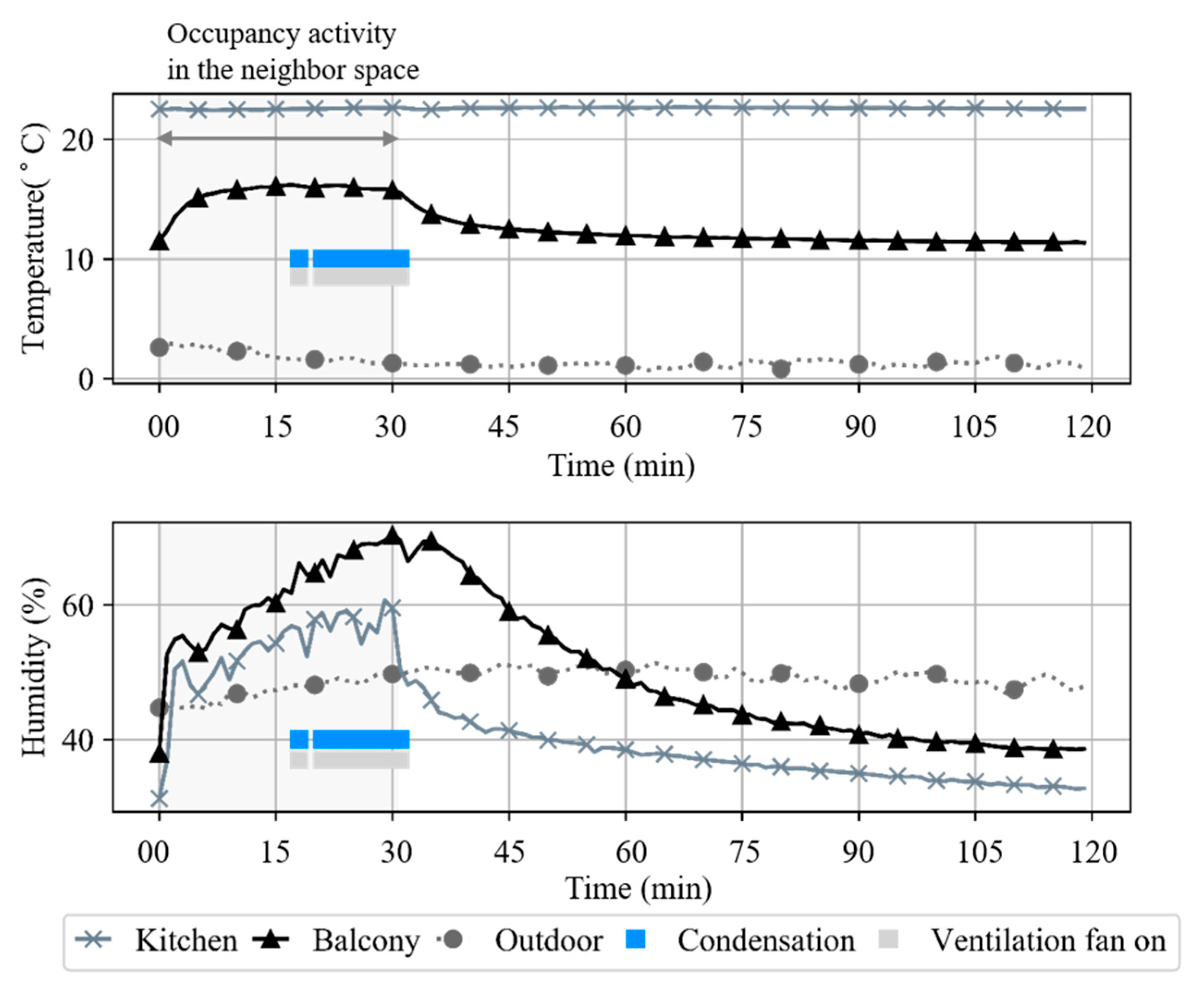
| Measure Element | Field Measurement Instrument | IoT Experiment Instrument | ||
|---|---|---|---|---|
| Main Unit | Sensor | Main Unit | Sensor | |
| Zone Air | Data Logger Model SK-L200THIIa | SK-LTHIIa-2 w/Sensor cord Temp: ± 0.5 °C at 15.0 °C to 35.0 °C Humidity: ±3% rh at 15.0 °C to 35.0 °C (30 to 90% rh) | Raspberry Pi 3 Model B | Adafruit Sensirion SHT 31-D Temp: ±0.3 °C most uses Humidity: ±2% rh most uses |
| Wall Surface | National Instrument Device | T-type (Copper/Constantan) Thermocouple | Thermocouple Amplifier MAX31856 | |
| T-type (Copper/Constantan) Thermocouple | ||||
© 2020 by the authors. Licensee MDPI, Basel, Switzerland. This article is an open access article distributed under the terms and conditions of the Creative Commons Attribution (CC BY) license (http://creativecommons.org/licenses/by/4.0/).
Share and Cite
Lee, J.H.; Yeo, M.S. Condensation Control to Cope with Occupancy Activity and Effectively Mitigate Condensation in Unheated Spaces by Real-Time Sensor Control Strategy. Sustainability 2020, 12, 4033. https://doi.org/10.3390/su12104033
Lee JH, Yeo MS. Condensation Control to Cope with Occupancy Activity and Effectively Mitigate Condensation in Unheated Spaces by Real-Time Sensor Control Strategy. Sustainability. 2020; 12(10):4033. https://doi.org/10.3390/su12104033
Chicago/Turabian StyleLee, June Hae, and Myoung Souk Yeo. 2020. "Condensation Control to Cope with Occupancy Activity and Effectively Mitigate Condensation in Unheated Spaces by Real-Time Sensor Control Strategy" Sustainability 12, no. 10: 4033. https://doi.org/10.3390/su12104033
APA StyleLee, J. H., & Yeo, M. S. (2020). Condensation Control to Cope with Occupancy Activity and Effectively Mitigate Condensation in Unheated Spaces by Real-Time Sensor Control Strategy. Sustainability, 12(10), 4033. https://doi.org/10.3390/su12104033





